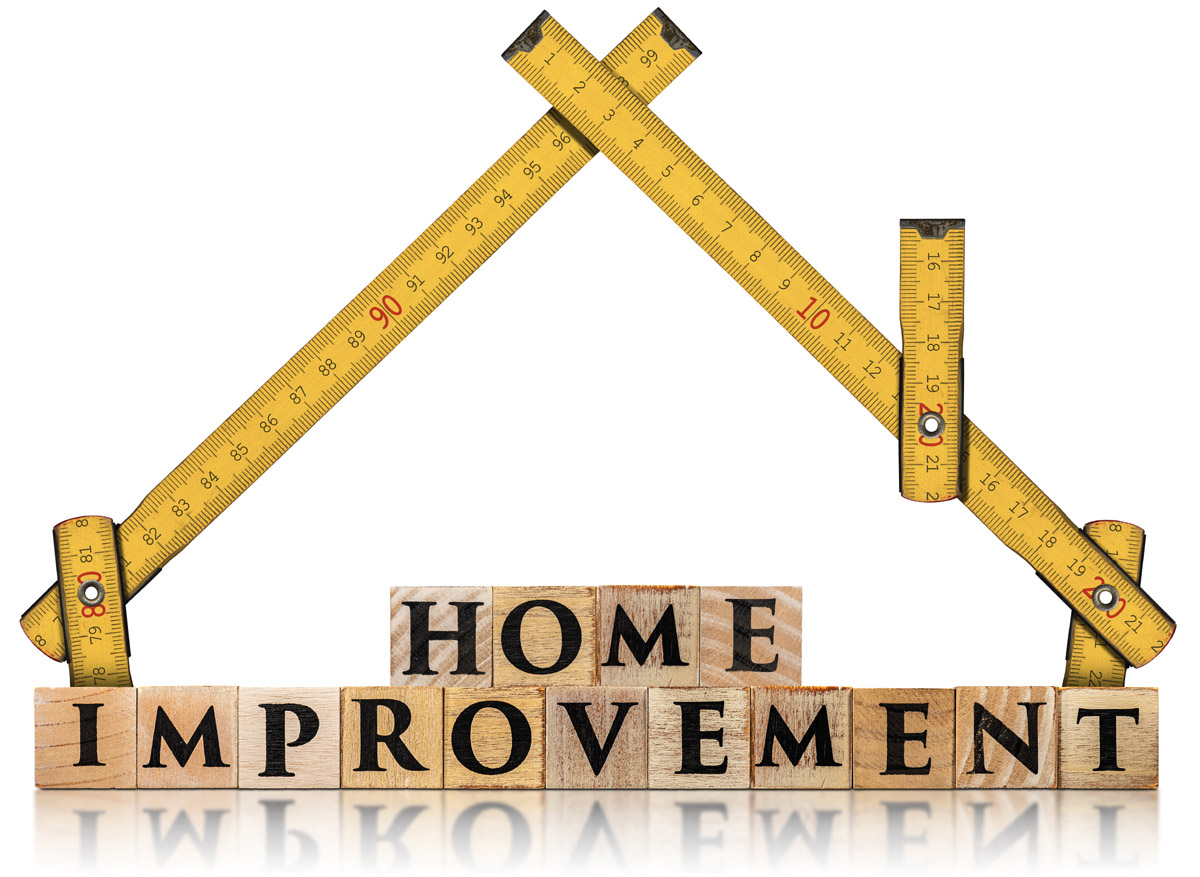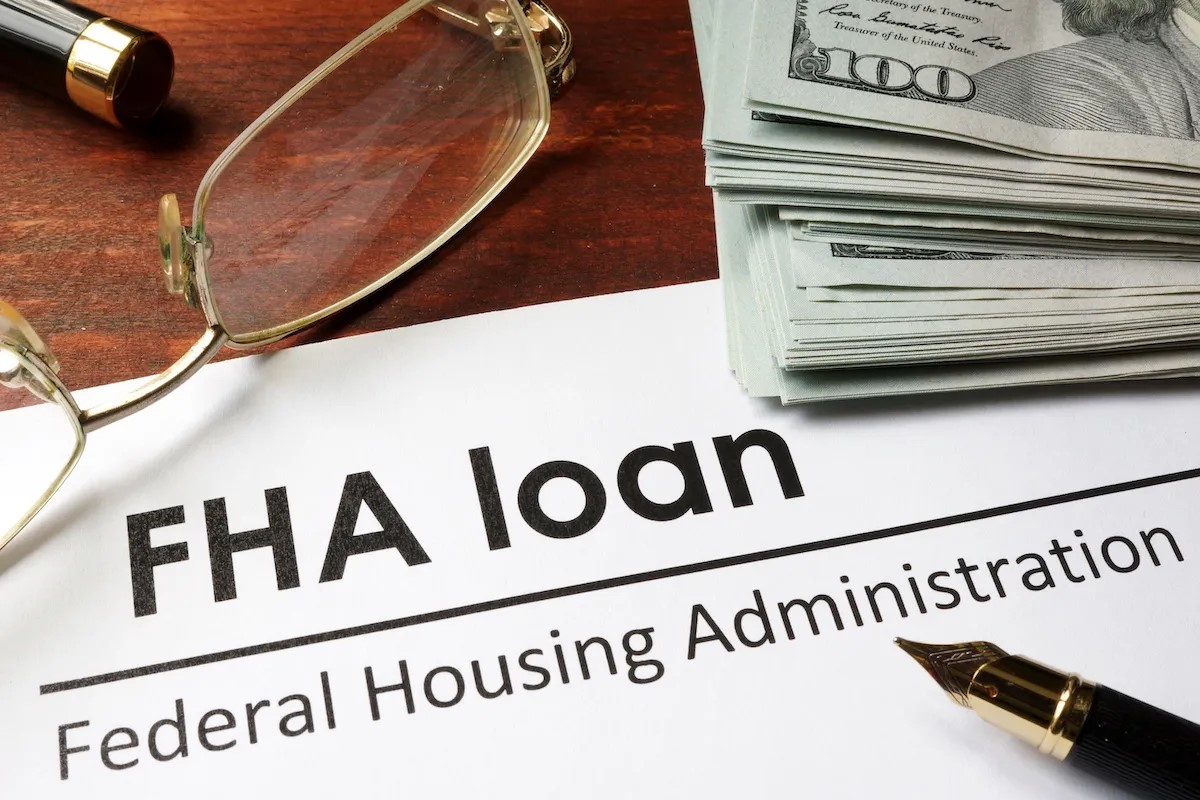Home>Renovation & DIY>Home Renovation Guides>Where To Get A Home Improvement Loan


Home Renovation Guides
Where To Get A Home Improvement Loan
Modified: January 9, 2024
Looking for a home improvement loan? Our comprehensive home renovation guides will help you find the best options for financing your project. Explore now!
(Many of the links in this article redirect to a specific reviewed product. Your purchase of these products through affiliate links helps to generate commission for Storables.com, at no extra cost. Learn more)
Introduction
Are you dreaming of renovating your home, but the cost is holding you back? A home improvement loan could be the solution you've been searching for. Whether you're planning to revamp your kitchen, add an extra bedroom, or upgrade your outdoor living space, a home improvement loan can provide the financial assistance you need to turn your vision into reality.
Understanding the ins and outs of home improvement loans is crucial before embarking on your renovation journey. From the different types of loans available to where you can find them and how to secure one, this guide will walk you through everything you need to know to make informed decisions and breathe new life into your living space.
So, let's dive into the world of home improvement loans and explore the possibilities that await you. Whether you're a seasoned homeowner or a first-time buyer, this comprehensive guide will equip you with the knowledge and confidence to pursue your home renovation dreams.
Key Takeaways:
- Home improvement loans offer flexible financing for various projects, from kitchen remodels to energy-efficient upgrades, without risking your home as collateral. They provide predictable payments and accessible options for homeowners.
- To secure a home improvement loan, assess your budget, improve your credit score, compare loan options, and communicate your renovation plans clearly. Seeking pre-approval and working with reputable lenders can enhance your borrowing experience.
Read more: How To Get A Loan To Do Home Improvements?
Understanding Home Improvement Loans
Home improvement loans are specifically designed to provide homeowners with the financial means to upgrade, repair, or expand their properties. These loans offer a convenient way to fund renovation projects without having to dip into personal savings or rely on high-interest credit cards. By spreading the cost of improvements over time, homeowners can enhance the comfort, functionality, and value of their homes while maintaining financial stability.
One of the key advantages of home improvement loans is their flexibility. They can be used for a wide range of projects, including kitchen and bathroom remodels, roof repairs, HVAC system upgrades, landscaping, and more. Whether you’re looking to make minor cosmetic changes or undertake major structural renovations, a home improvement loan can provide the necessary funds to bring your vision to life.
It’s important to note that home improvement loans differ from home equity loans and home equity lines of credit (HELOCs). While home equity loans and HELOCs are secured by the equity in your home, home improvement loans are typically unsecured, meaning they don’t require collateral. This can make them a more accessible option for homeowners who haven’t built up substantial equity or who prefer not to put their home at risk.
Furthermore, home improvement loans often feature fixed interest rates and predictable monthly payments, making it easier for borrowers to budget and plan for their renovation expenses. With a clear repayment schedule and a predefined loan term, homeowners can embark on their projects with confidence, knowing exactly how much they need to repay each month.
By understanding the purpose and benefits of home improvement loans, homeowners can make informed decisions about their renovation plans and explore the various loan options available to them. With a solid grasp of the fundamentals, you’ll be better equipped to navigate the world of home improvement financing and embark on your renovation journey with clarity and confidence.
Types of Home Improvement Loans
When it comes to financing home improvement projects, homeowners have several options to consider. Understanding the different types of home improvement loans can help you choose the right financial solution for your specific renovation needs. Here are some common types of home improvement loans:
- Personal Loans: Personal loans are unsecured loans that can be used for a variety of purposes, including home improvements. They are typically based on the borrower’s creditworthiness and income, and they don’t require any collateral. Personal loans offer flexibility and can be obtained from banks, credit unions, or online lenders.
- Home Equity Loans: Home equity loans allow homeowners to borrow against the equity in their homes. This type of loan typically offers a lump sum payment with a fixed interest rate, making it suitable for large, one-time expenses such as major renovations. Home equity loans are secured by the value of the home and may have longer repayment terms compared to personal loans.
- Home Equity Lines of Credit (HELOCs): HELOCs also leverage the equity in a home, but they function more like a credit card with a revolving line of credit. Homeowners can borrow funds as needed, up to a predetermined credit limit, and only pay interest on the amount they use. HELOCs offer flexibility and can be a convenient option for ongoing or phased home improvement projects.
- Government-Backed Loans: Certain government programs, such as the Federal Housing Administration (FHA) Title I Property Improvement Loan Program, offer loans specifically tailored for home improvements. These loans are insured by the government and may have less stringent credit requirements, making them accessible to a wider range of homeowners.
- Manufacturer or Retailer Financing: Some home improvement projects, such as energy-efficient upgrades or appliance purchases, may offer financing options through manufacturers or retailers. These financing programs may come with promotional interest rates or special terms, providing homeowners with a convenient way to fund specific improvement projects.
Each type of home improvement loan has its own advantages and considerations, and the right choice will depend on factors such as the scope of the project, the homeowner’s financial situation, and preferences regarding interest rates and repayment terms. By exploring the available options and understanding their implications, homeowners can select a loan that aligns with their renovation goals and financial circumstances.
Now that you have a better understanding of the types of home improvement loans available, you can begin exploring the potential sources of funding for your upcoming renovation endeavors.
Where to Find Home Improvement Loans
Securing a home improvement loan involves exploring various avenues to find the most suitable financing option for your specific needs. Whether you prefer traditional lenders, online platforms, or specialized programs, there are several sources where you can find home improvement loans:
- Banks and Credit Unions: Traditional financial institutions, such as banks and credit unions, offer personal loans, home equity loans, and other financing options for home improvements. These lenders provide personalized service and the opportunity to discuss your needs with a loan officer, making it easier to navigate the application process and explore competitive interest rates.
- Online Lenders: Online lending platforms have become increasingly popular for accessing home improvement loans. These platforms offer a convenient way to compare loan options, submit applications, and receive funding without visiting a physical branch. Online lenders may provide quick approval processes and competitive terms, making them a convenient choice for tech-savvy homeowners.
- Mortgage Lenders: If you’re considering a home equity loan or HELOC, your existing mortgage lender may offer these products as part of their financial services. Working with your mortgage lender can streamline the borrowing process and potentially result in favorable terms, especially if you have a strong payment history and equity in your home.
- Government Programs: Certain government-backed programs, such as the FHA Title I Property Improvement Loan Program, offer specialized loans for home improvements. These programs are designed to assist homeowners who may not qualify for traditional loans due to credit history or other factors. Exploring government initiatives can provide access to tailored financing solutions and favorable terms.
- Home Improvement Retailers: Some home improvement retailers and manufacturers partner with financing companies to offer loans or credit options for specific products and projects. Whether you’re purchasing energy-efficient appliances or undertaking a large-scale renovation, these financing programs can provide a convenient way to fund your home improvement endeavors.
By considering these sources, homeowners can evaluate the available loan options, compare interest rates, and assess the terms and conditions that best align with their renovation plans and financial circumstances. Whether you prefer a traditional approach or seek the convenience of online lending, exploring multiple sources can help you secure the ideal home improvement loan for your project.
Now that you know where to find home improvement loans, the next step is to understand the application process and the key factors to consider when applying for financing.
Consider getting a home improvement loan from a bank, credit union, or online lender. Compare interest rates, terms, and fees to find the best option for your needs.
How to Apply for a Home Improvement Loan
When it comes to applying for a home improvement loan, thorough preparation and understanding the application process are essential for a smooth and successful experience. Here’s a step-by-step guide to help you navigate the application process and secure the financing you need for your renovation project:
- Evaluate Your Financing Needs: Start by determining the total cost of your home improvement project and the amount of financing required. Consider factors such as materials, labor, permits, and any additional expenses to arrive at a comprehensive budget.
- Check Your Credit Score: Before applying for a loan, review your credit score and history. Lenders typically consider creditworthiness when evaluating loan applications, so it’s important to address any discrepancies and improve your credit profile if necessary.
- Research Loan Options: Explore the various types of home improvement loans available, considering factors such as interest rates, repayment terms, and eligibility requirements. Compare loan products from different lenders to find the best fit for your financial situation and renovation plans.
- Gather Necessary Documentation: Prepare essential documents, such as proof of income, tax returns, bank statements, and details of the planned renovation. Having these documents readily available will streamline the application process and demonstrate your financial stability to lenders.
- Submit Your Application: Whether you choose to apply online, visit a local branch, or work with a loan officer, complete the application form accurately and provide all required documentation. Be prepared to answer questions about your renovation project and provide details about the scope and timeline of the work.
- Review Loan Terms and Offers: Once you’ve submitted your application, carefully review the loan terms and offers provided by lenders. Pay attention to interest rates, repayment schedules, and any associated fees to ensure that the loan aligns with your budget and financial goals.
- Accept the Loan and Begin Your Project: Upon approval of the loan, carefully review the final terms and conditions before accepting the offer. Once the funds are disbursed, you can initiate your home improvement project and begin transforming your living space according to your plans.
By following these steps and being proactive in your approach, you can streamline the application process and increase the likelihood of securing a home improvement loan that meets your needs. Whether you’re enhancing your home’s functionality, addressing maintenance issues, or embarking on a major renovation, a well-executed loan application can set the stage for a successful and rewarding home improvement journey.
With a clear understanding of the application process, you can confidently pursue your renovation goals and access the financial resources needed to bring your vision to life.
Tips for Getting a Home Improvement Loan
Securing a home improvement loan involves careful planning and strategic decision-making to ensure a smooth and successful borrowing experience. Consider the following tips to enhance your chances of obtaining a favorable loan for your renovation project:
- Assess Your Budget: Before applying for a loan, evaluate your budget and determine the total cost of your renovation project. Understanding your financial needs will help you select the most suitable loan amount and repayment terms.
- Improve Your Credit Score: A strong credit score can increase your eligibility for favorable loan terms. Take steps to improve your credit profile by addressing any outstanding debts, ensuring timely bill payments, and minimizing credit utilization before applying for a home improvement loan.
- Compare Loan Options: Research and compare different types of home improvement loans, considering factors such as interest rates, repayment terms, and associated fees. By exploring multiple loan products, you can identify the most competitive and cost-effective financing solution for your project.
- Prepare Necessary Documentation: Gather essential documents, including proof of income, tax returns, and details of the planned renovation. Having these documents readily available will expedite the application process and demonstrate your financial stability to lenders.
- Consider Collateral Options: If you have substantial equity in your home, consider leveraging it through a home equity loan or line of credit. Offering collateral can enhance your loan options and potentially result in lower interest rates and more favorable terms.
- Seek Pre-Approval: Obtaining pre-approval for a home improvement loan can provide clarity on your borrowing capacity and streamline the purchasing process. Pre-approval signals to sellers and contractors that you are a serious and prepared buyer, potentially enhancing your negotiating power.
- Understand Loan Terms and Conditions: Thoroughly review the terms and conditions of any loan offers, paying attention to interest rates, repayment schedules, and potential fees. Ensure that you fully understand the implications of the loan before committing to the borrowing agreement.
- Communicate Your Renovation Plans: When discussing your loan application with lenders, clearly communicate the details of your renovation project, including the scope of work, timelines, and expected outcomes. Providing a comprehensive overview can instill confidence in the lender regarding the purpose and feasibility of the loan.
- Work with Reputable Lenders: Choose established and reputable lenders with a track record of providing transparent and customer-centric lending services. Research lender reviews and seek recommendations to identify trustworthy financial institutions for your home improvement loan.
- Consult with Financial Advisors: If you’re uncertain about the best financing options for your renovation project, consider consulting with financial advisors or loan specialists. Their expertise can provide valuable insights and guidance to help you make informed borrowing decisions.
By implementing these tips and taking a proactive approach to the loan application process, you can enhance your prospects of securing a home improvement loan that aligns with your renovation goals and financial circumstances. With careful consideration and strategic planning, you can embark on your home improvement journey with confidence and the necessary financial support.
Now that you’re equipped with valuable tips for obtaining a home improvement loan, you can approach the borrowing process with clarity and preparedness, setting the stage for a successful and rewarding renovation experience.
Conclusion
Congratulations! You’ve embarked on a journey to explore the world of home improvement loans, gaining valuable insights into the financing options available for your renovation aspirations. By delving into the nuances of home improvement loans, understanding the application process, and considering strategic tips for securing favorable financing, you’ve equipped yourself with the knowledge and confidence to pursue your home renovation dreams.
As you navigate the realm of home improvement loans, remember that thorough preparation, careful consideration of loan options, and proactive engagement with lenders can significantly impact your borrowing experience. Whether you’re planning a minor upgrade or a major renovation, the right loan can provide the financial foundation to transform your living space and enhance the comfort, functionality, and value of your home.
With a clear understanding of the types of home improvement loans, the sources to explore, and the essential steps to secure financing, you’re well-positioned to make informed decisions and embark on your renovation journey with confidence. Whether you choose to engage traditional lenders, explore online platforms, or leverage government-backed programs, the resources and expertise you’ve gained will serve as valuable assets in your pursuit of the ideal home improvement loan.
As you move forward with your renovation plans, remember that each step you take, from evaluating your budget to communicating your vision to lenders, brings you closer to realizing the home of your dreams. By applying the knowledge and insights gleaned from this guide, you can navigate the borrowing process with clarity and purpose, setting the stage for a successful and fulfilling home improvement endeavor.
Now, armed with a wealth of information and a clear roadmap for obtaining a home improvement loan, you’re ready to take the next steps toward transforming your living space and creating a home that reflects your vision and lifestyle. Embrace the possibilities, stay informed, and let the journey to a revitalized home begin!
Frequently Asked Questions about Where To Get A Home Improvement Loan
Was this page helpful?
At Storables.com, we guarantee accurate and reliable information. Our content, validated by Expert Board Contributors, is crafted following stringent Editorial Policies. We're committed to providing you with well-researched, expert-backed insights for all your informational needs.















0 thoughts on “Where To Get A Home Improvement Loan”